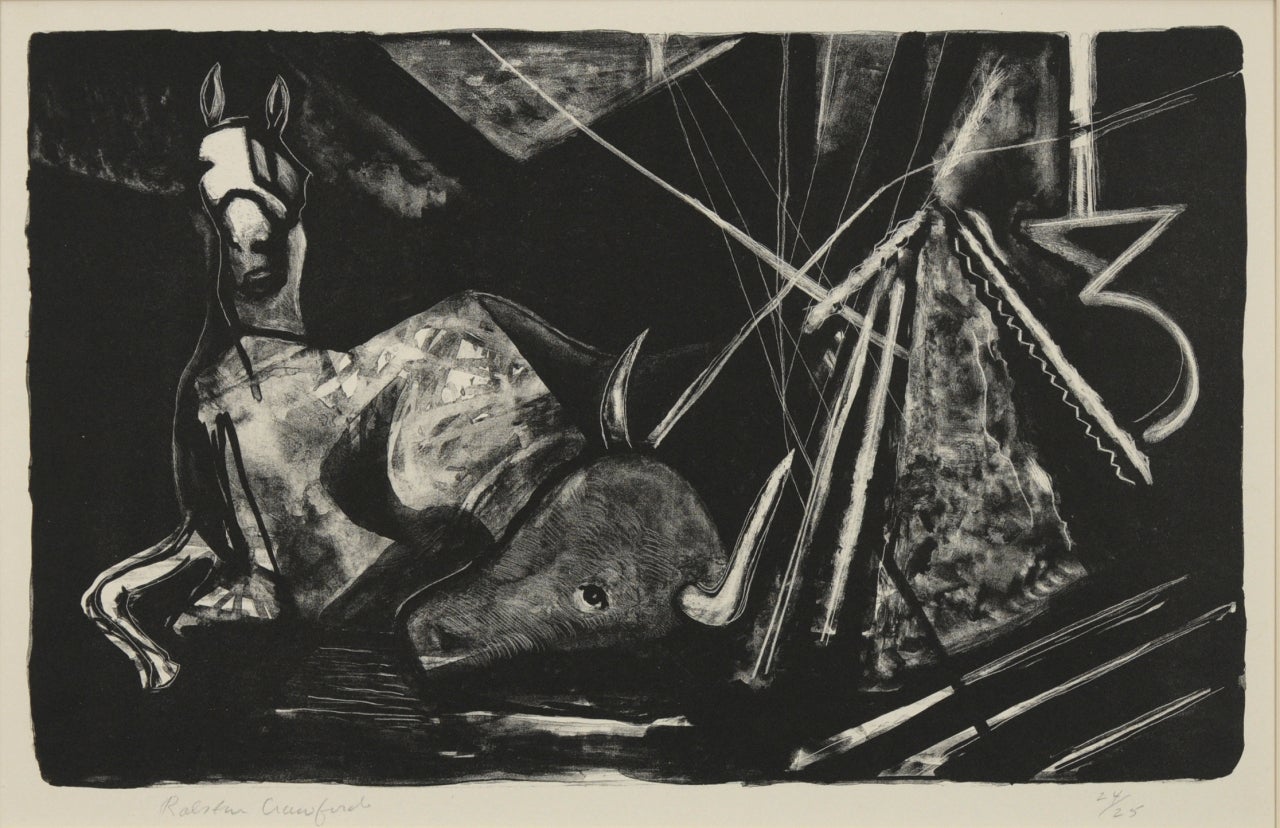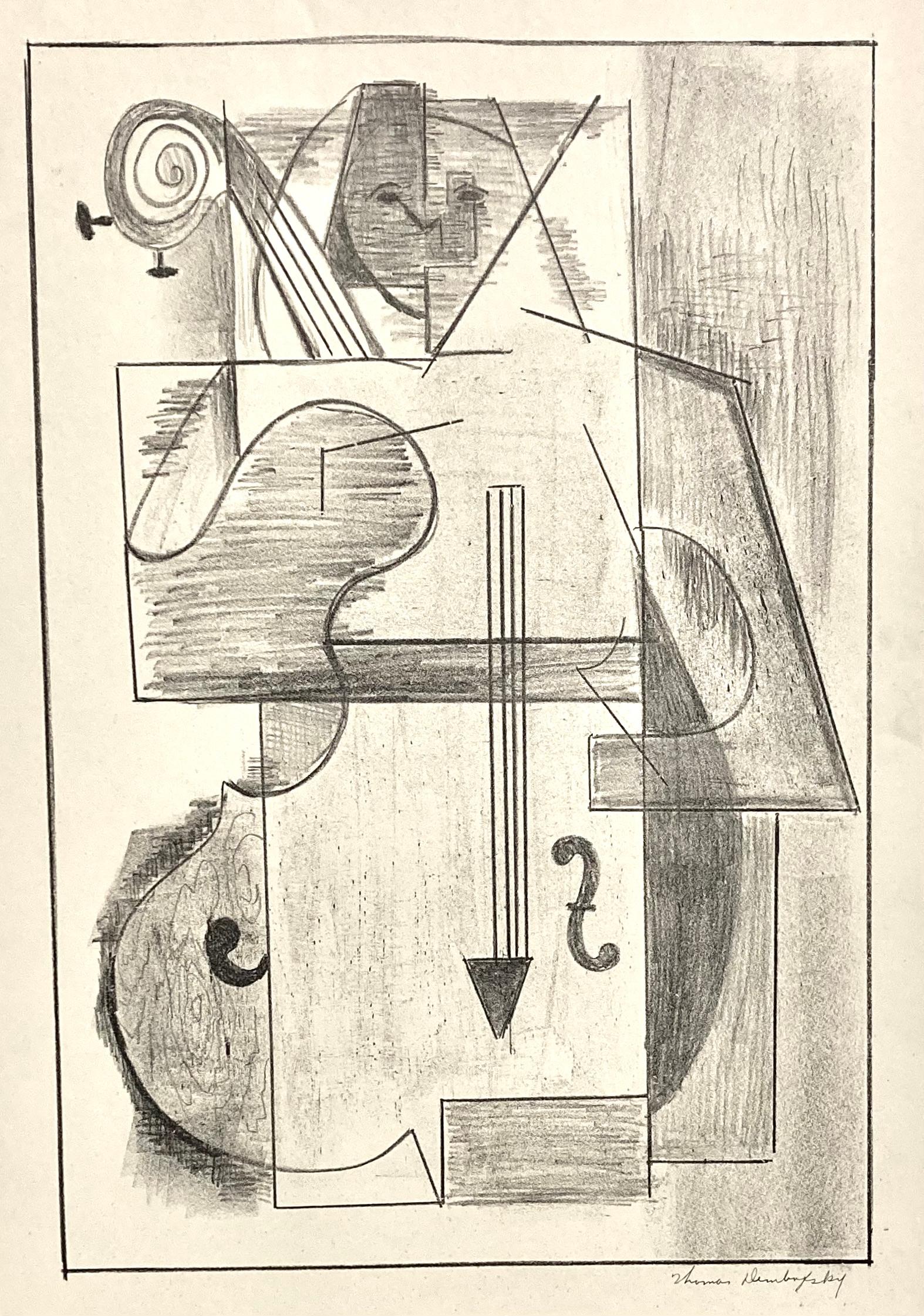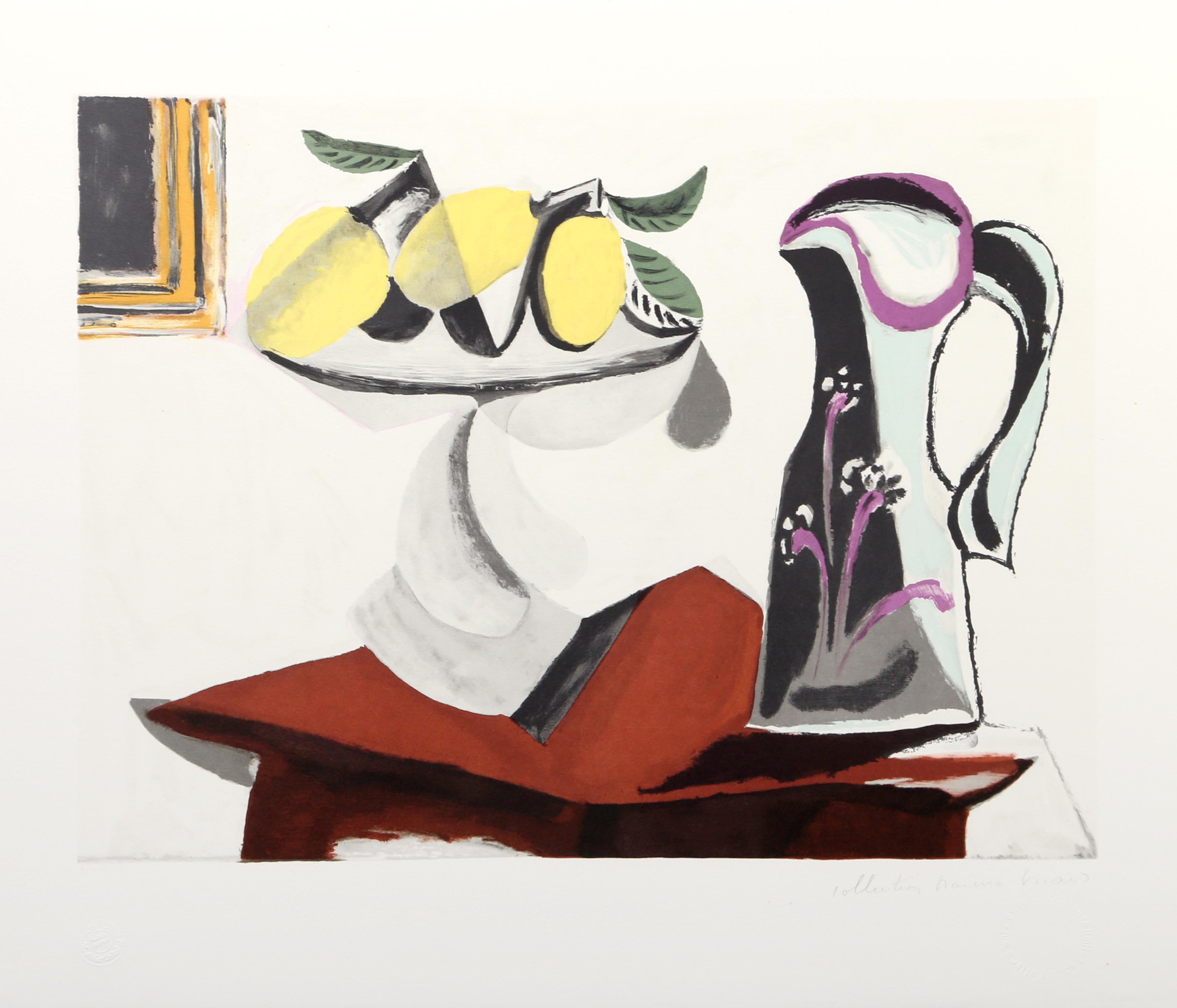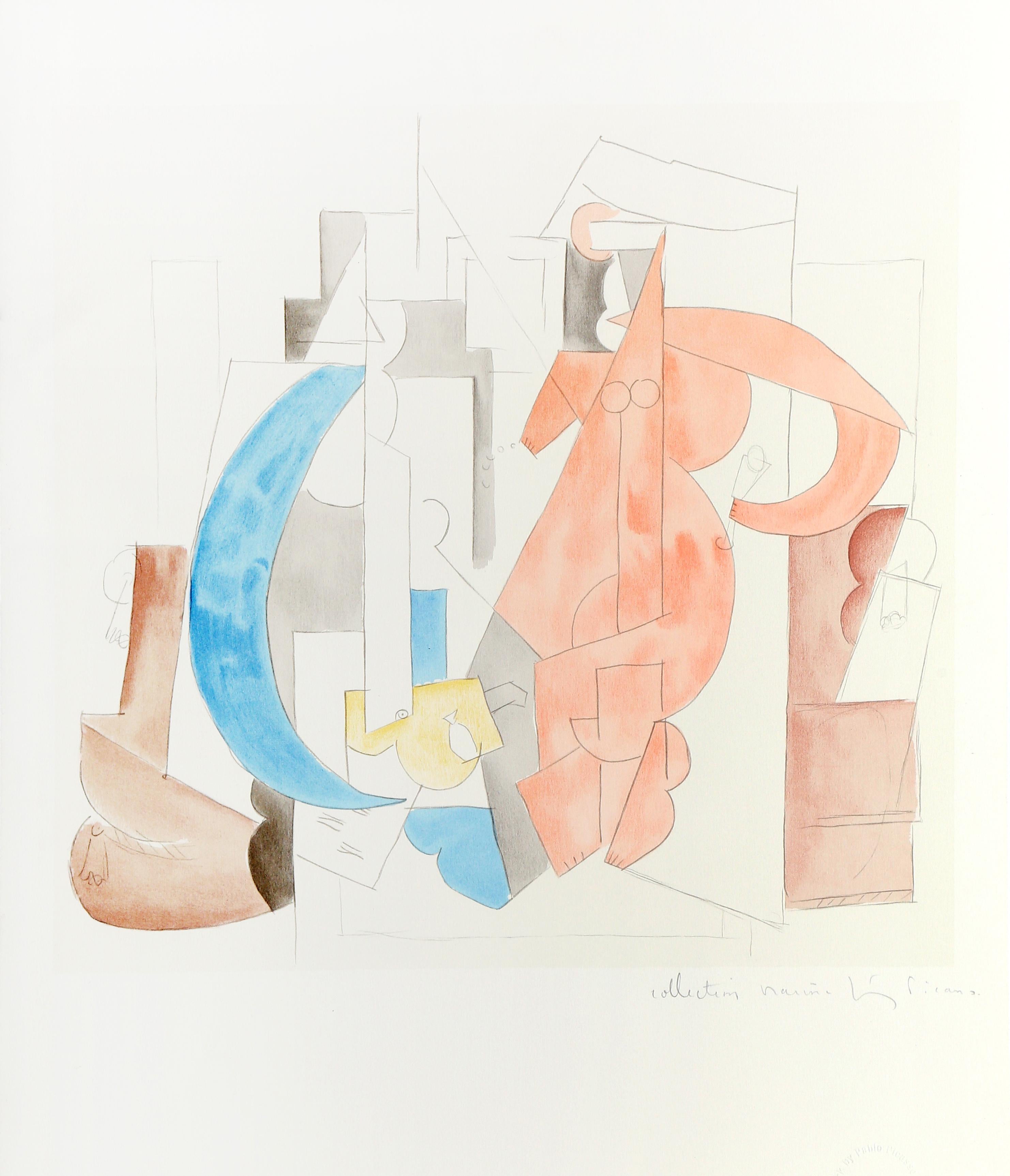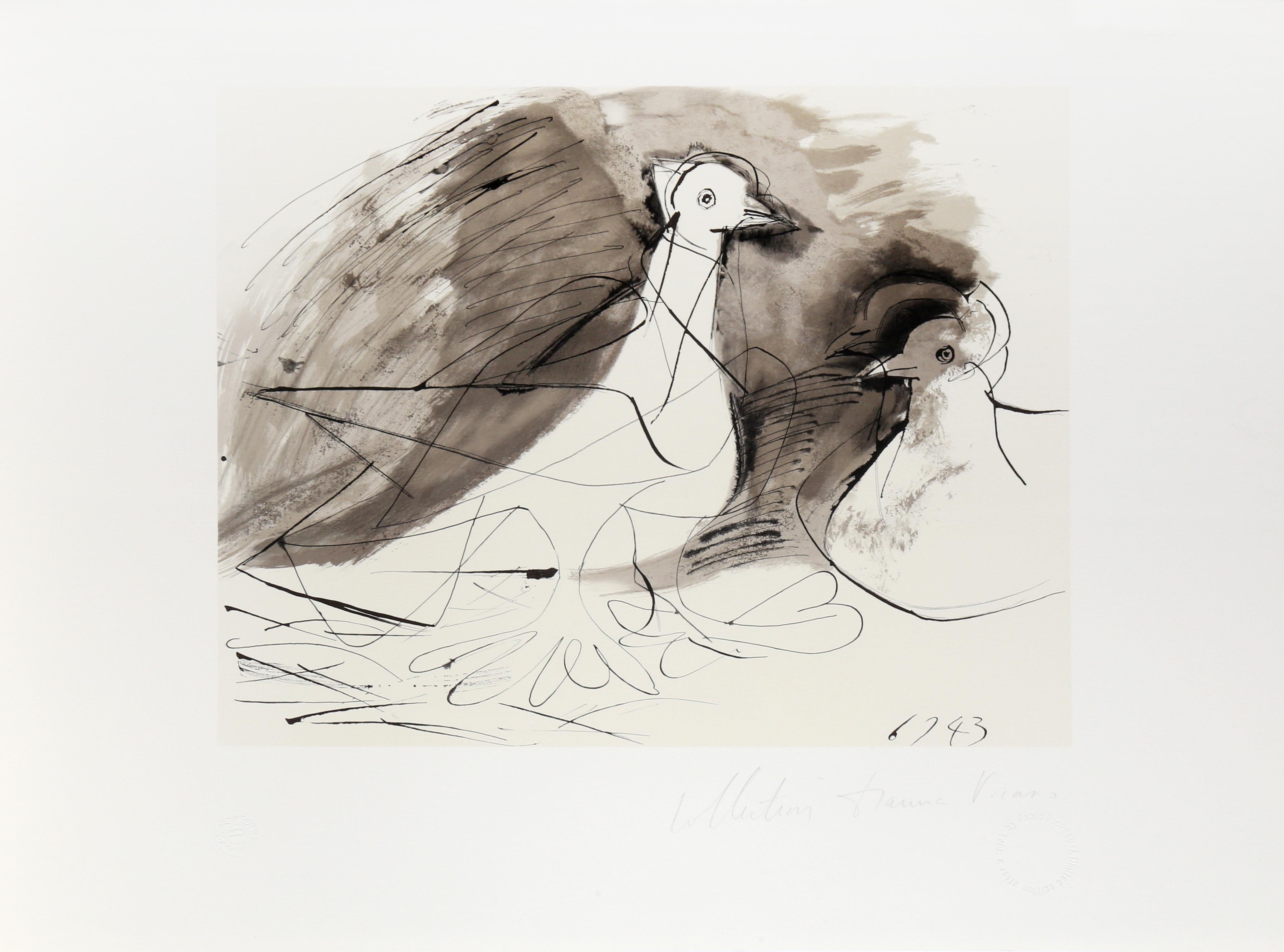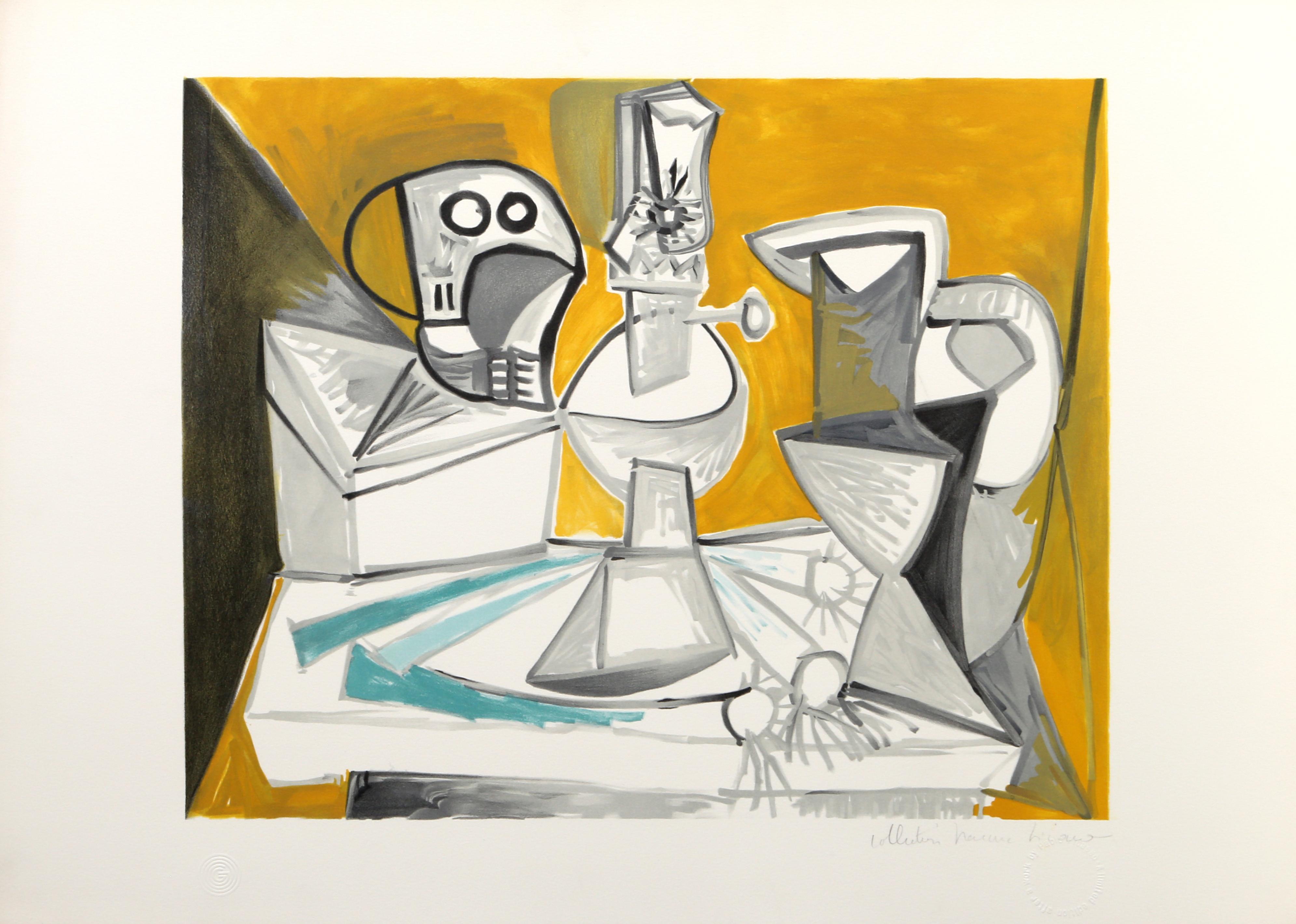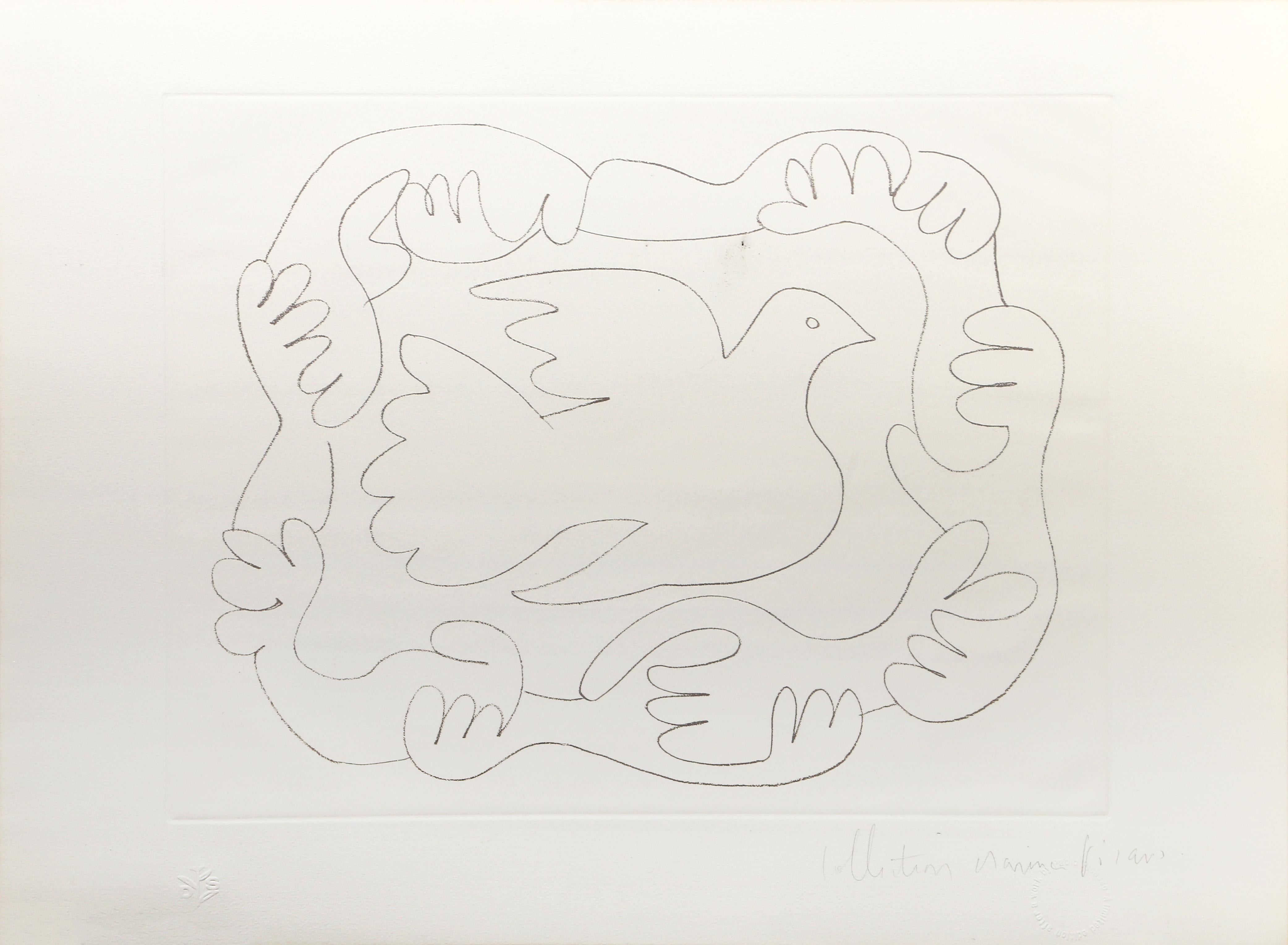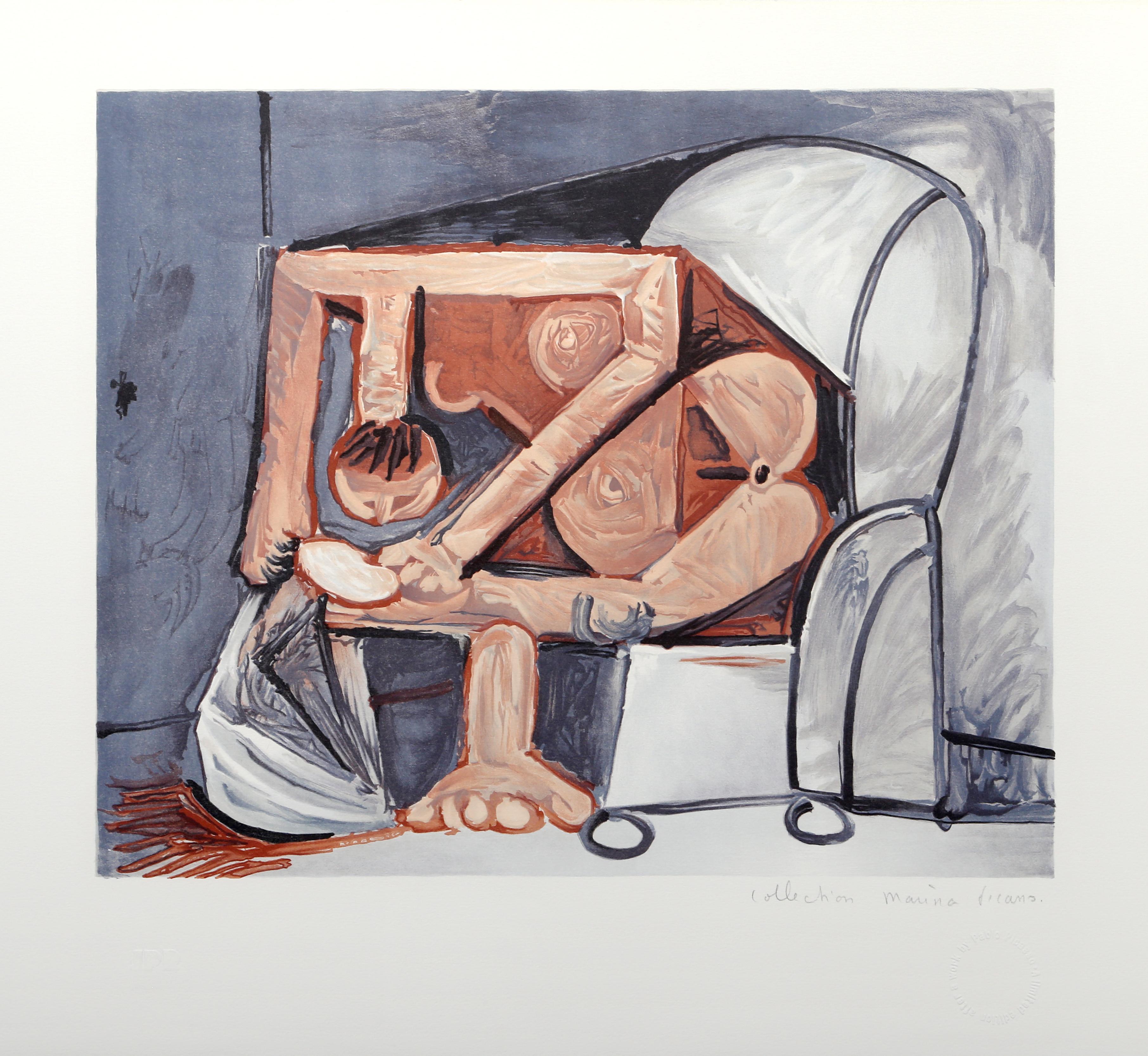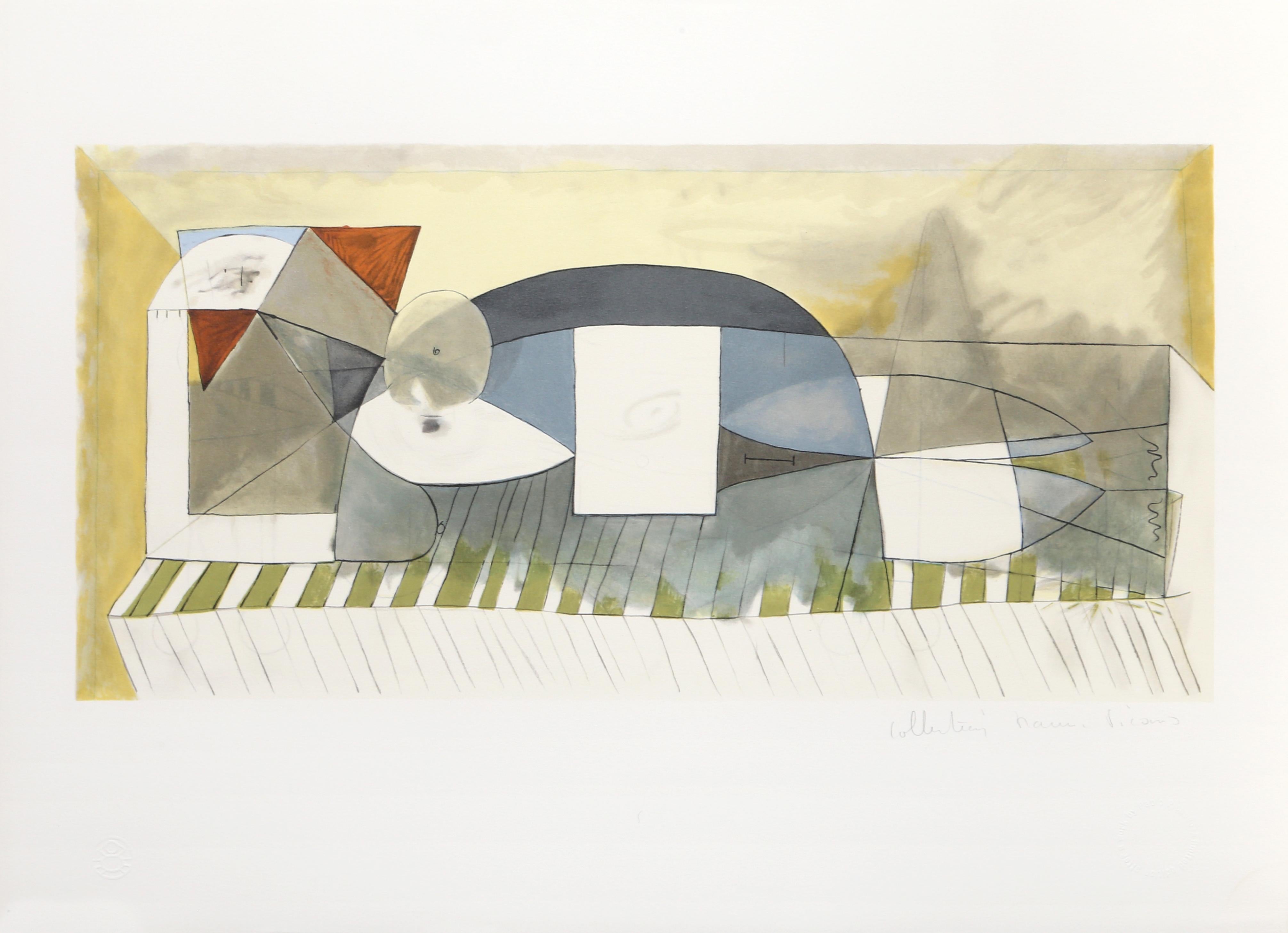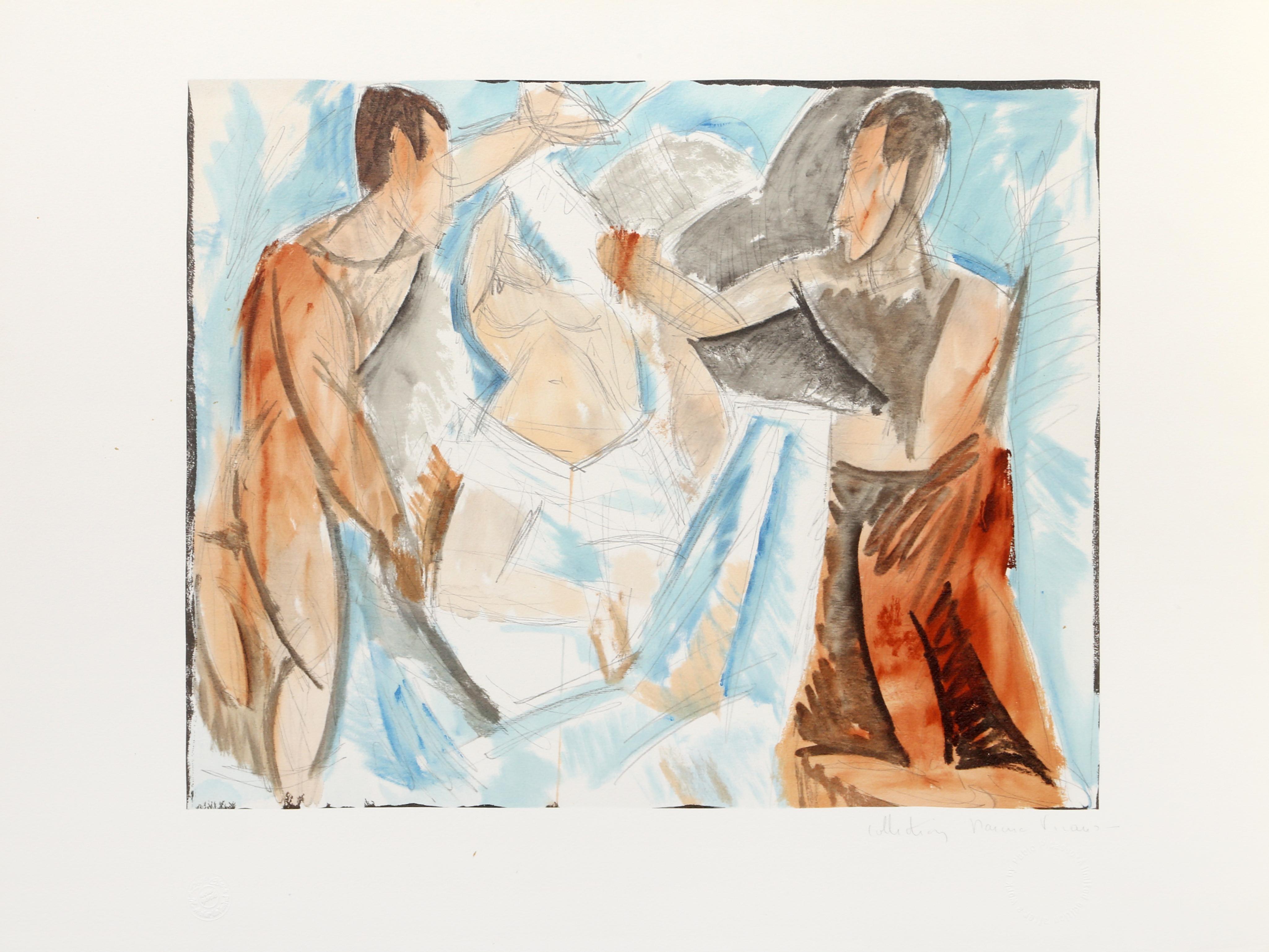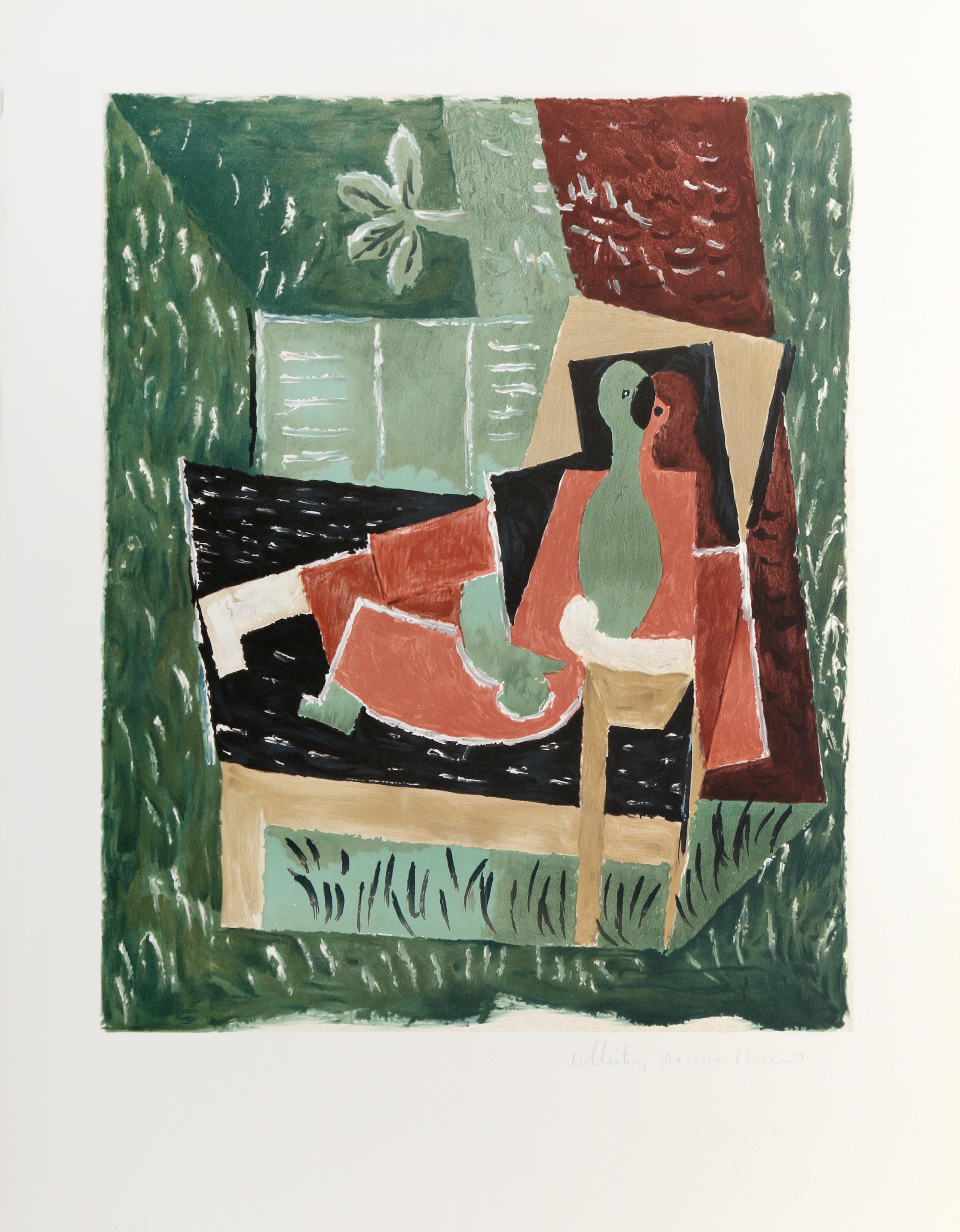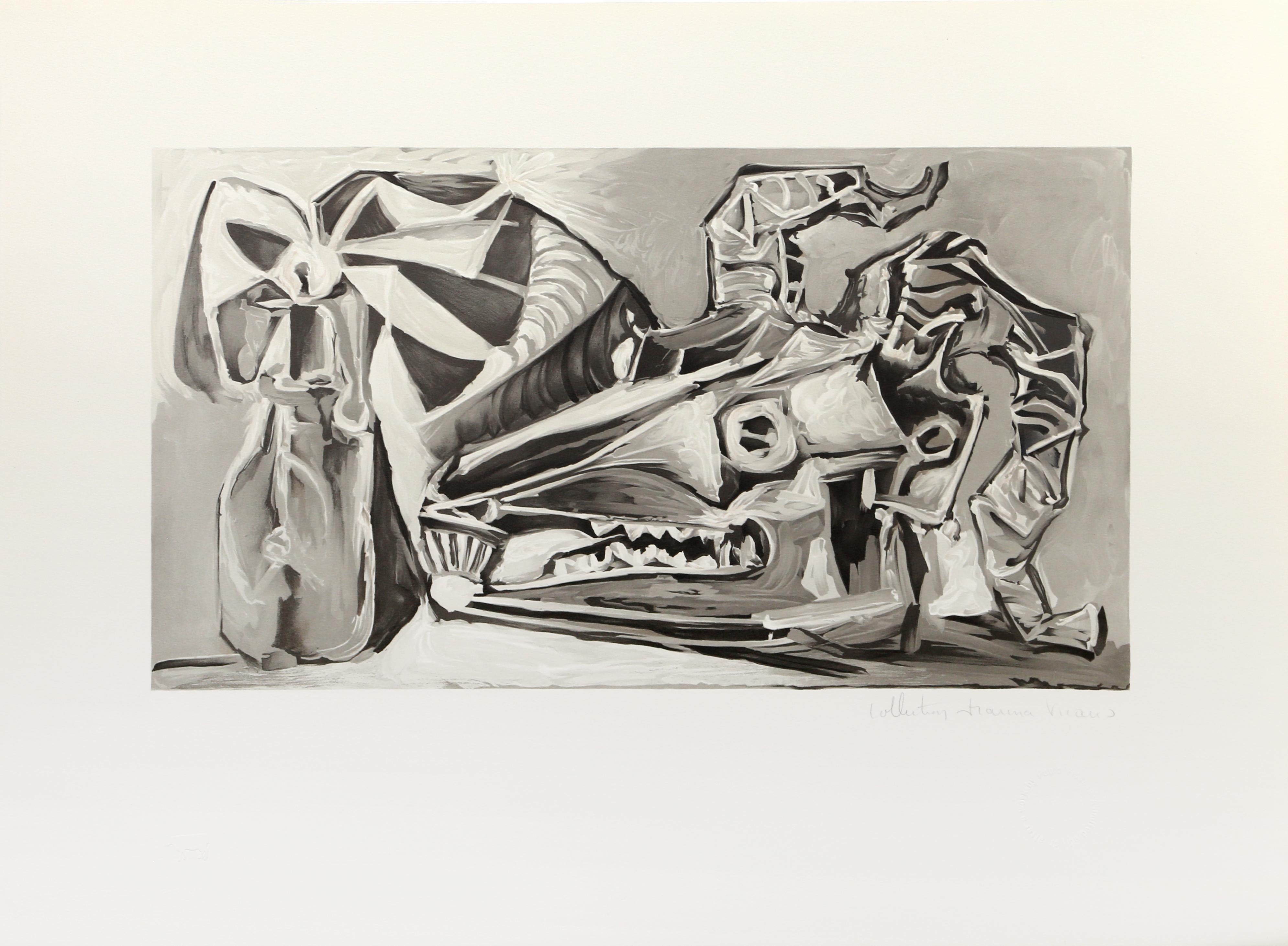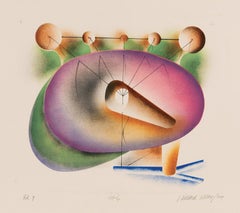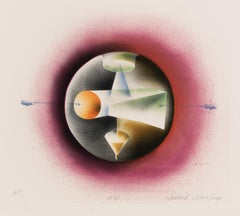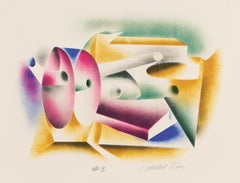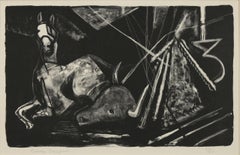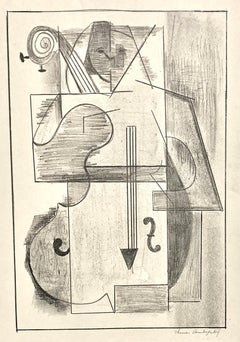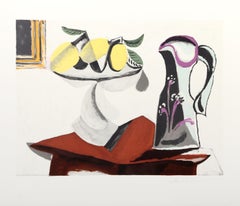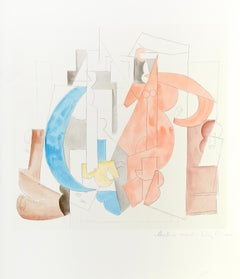
'Femme Cubiste, 1914' — Artist signed lithograph, after the Cubist Masterpiece
View Similar Items
Want more images or videos?
Request additional images or videos from the seller
1 of 8
Jacques Villon'Femme Cubiste, 1914' — Artist signed lithograph, after the Cubist Masterpiece1914/1962
1914/1962
About the Item
- Creator:Jacques Villon (1875-1963, French)
- Creation Year:1914/1962
- Dimensions:Height: 23 in (58.42 cm)Width: 11 in (27.94 cm)
- Medium:
- Movement & Style:
- Period:
- Condition:
- Gallery Location:Myrtle Beach, SC
- Reference Number:Seller: 1032511stDibs: LU532314955852
Jacques Villon
Jacques Villon was born Gaston Duchamp in 1875. He was the oldest brother of the artists Marcel Duchamp, Suzanne Duchamp-Crotti and the sculptor Raymond Duchamp-Villon. Initially a law student, in 1894 he went to Paris to study art. It was there that he met Henri Toulouse-Lautrec and other influential artists in Paris, and changed his name to Jacques Villon, after the poet. Villon made prints of some of the most well-known belle-époque portraits and genre scenes of the early twentieth century. Around 1911, he came under the influence of Picasso and other cubists, and became a leading exponent of the style, exhibiting in the 1913 Armory Show in New York. In 1922, the Galerie Bernheim-Jeune commissioned Villon to produce a series of color aquatints after 38 major nineteenth- and twentieth-century paintings. This series included works by Pierre Auguste Renoir, Henri Matisse, Pablo Picasso, Paul Cezanne, Georges Braque, Raoul Dufy, Amadeo Modigliani, Edouard Manet, Pierre Bonnard, and others. Artists who were alive at the time of the printing collaborated with Villon, and signed the prints. The project took ten years to complete. Several of these prints are valued highly today, and some went on to be reproduced by the Louvre Museum as photo-etchings. Villon's 'cubist' etchings, with their characteristic cross-hatching, are amongst the most renowned prints of the twentieth century. Jacques Villon's long career brought him fame. The diverse nature of his paintings, from end-of-the-century portraits to cubist and abstract styles to graphic works, made him a major figure in twentieth-century art. He was made a Grand Officer of the Légion d'Honneur, and upon his death in 1963, and he was given a state funeral.
About the Seller
5.0
Recognized Seller
These prestigious sellers are industry leaders and represent the highest echelon for item quality and design.
Platinum Seller
Premium sellers with a 4.7+ rating and 24-hour response times
Established in 1995
1stDibs seller since 2016
297 sales on 1stDibs
Typical response time: 1 hour
Associations
International Fine Print Dealers Association
Authenticity Guarantee
In the unlikely event there’s an issue with an item’s authenticity, contact us within 1 year for a full refund. DetailsMoney-Back Guarantee
If your item is not as described, is damaged in transit, or does not arrive, contact us within 7 days for a full refund. Details24-Hour Cancellation
You have a 24-hour grace period in which to reconsider your purchase, with no questions asked.Vetted Professional Sellers
Our world-class sellers must adhere to strict standards for service and quality, maintaining the integrity of our listings.Price-Match Guarantee
If you find that a seller listed the same item for a lower price elsewhere, we’ll match it.Trusted Global Delivery
Our best-in-class carrier network provides specialized shipping options worldwide, including custom delivery.More From This Seller
View All'Descente de Croix' (Descent from the Cross) — 1920s French Cubism
By Albert Gleizes
Located in Myrtle Beach, SC
Albert Gleizes, 'Descente de Croix', color pochoir, 1928, edition c. 50. Signed and dated in pencil. A fine, painterly impression, with fresh colors, on heavy, cream wove paper; the full sheet with margins (3 to 4 inches), in very good condition. The publisher's ink stamp 'EDITIONS MOLY-SABATA' beneath the image, lower left. Matted to museum standards, unframed.
Image size 12 x 14 inches (305 x 356 mm); sheet size 18 x 22 inches (457 x 559 mm).
ABOUT THE IMAGE
After the 1927 painting 'Descente de Croix', one of three religious-themed works that Gleizes developed as preliminaries for murals at the church at Serrières, France, the project was terminated at its final phase, and Gleizes commissioned master printer Robert Pouyaud to create prints of the paintings, closely overseeing the production.
ABOUT THE MEDIUM
Pochoir is a refined stencil-based technique employed to create multiples or to add color to prints produced in other mediums. Characterized by its crisp lines and rich color, the print-making process was most popular from the late 19th century through the 1930s, with its center of activity in Paris. The pochoir process began with the analysis of an image’s composition, including color tones and densities. The numerous stencils (made of aluminum, copper, or zinc) necessary to create a complete image were then designed and hand-cut by the 'découpeur.' The 'coloristes' applied watercolor or gouache pigments through the stencils, skillfully employing a variety of different brushes and methods of paint application to achieve the desired depth of color and textural and tonal nuance. The pochoir process, by its handcrafted methodology, resulted in the finished work producing the effect of an original painting, and in fact, each print was unique.
ABOUT THE ARTIST
Albert Gleizes (1881-1953), born in Paris, France, was a pioneering figure in the development of abstract art and one of the leading proponents of Cubism. His contributions to the art world extended beyond his paintings; he was also a prolific writer and theoretician, advocating for a new approach to art that emphasized the geometric abstraction of form and a departure from representational traditions.
Gleizes initially studied painting at the Académie Julian and the École des Beaux-Arts in Paris, where he was exposed to the academic conventions of the time. However, his artistic vision was profoundly influenced by encounters with avant-garde movements, including Fauvism and the work of Paul Cézanne. These influences led Gleizes to experiment with form and color, gradually moving away from traditional representation toward a more abstract and geometric style.
After completing his secondary schooling, Gleizes spent four years in the French army and then began pursuing a career as a painter, primarily doing landscapes. Initially influenced by the Impressionists, he was only twenty-one years of age when his work titled ‘La Seine à Asnières’ was exhibited at the Société Nationale des Beaux-Arts in 1902. The following year, he was part of the first Salon d'Automne and soon came under the influence of Fernand Léger, Robert Delaunay, Jean Metzinger, and Henri Le Fauconnier. In 1907, Gleizes and some of his friends pursued the idea of creating a self-supporting community of artists that would allow them to develop their art free of any commercial concerns. For nearly a year, Gleizes , with other painters, poets, musicians, and writers, lived at a large house in Créteil, but a lack of funds forced them to give up their facility in early 1908, and Gleizes moved temporarily into La Ruche, the artist commune in the Montparnasse Quarter of Paris.
In the early 1910s, Gleizes became associated with the Cubist movement, which was spearheaded by artists such as Pablo Picasso and Georges Braque...
Category
1920s Cubist Abstract Prints
Materials
Stencil
#6 — Modernist Abstraction — African American Artist
Located in Myrtle Beach, SC
Hilliard Dean, '#6', color lithograph, 1970, edition 9. Signed, titled, and annotated 'Ed 9' in pencil. A fine impression, with fresh colors, on Arches, ...
Category
1970s Contemporary Abstract Prints
Materials
Lithograph
#4 — Modernist Abstraction — African American Artist
Located in Myrtle Beach, SC
Hilliard Dean, '#4', color lithograph, 1970, edition not stated but small. Signed, titled, and annotated 'AP' in pencil. Dated 'May 1970' in pencil in th...
Category
1970s Contemporary Abstract Prints
Materials
Lithograph
#3 — Modernist Abstraction — African American Artist
Located in Myrtle Beach, SC
Hilliard Reynolds Dean, '#3', color lithograph, 1970, edition not stated but small. Signed and titled in pencil. A fine impression, with fresh colors, on Arches, heavy, cream wove pa...
Category
1970s American Modern Abstract Prints
Materials
Lithograph
'#9' — Modernist Abstraction — African American Artist
Located in Myrtle Beach, SC
Hilliard Dean, '#9', color lithograph, 1970, edition 7. Signed, titled, and annotated 'Ed 7' in pencil. A fine impression, with fresh colors, on Arches, ...
Category
1970s Contemporary Abstract Prints
Materials
Lithograph
#5 — Modernist Abstraction — African American Artist
Located in Myrtle Beach, SC
Hilliard Dean, '#5', color lithograph, 1970, edition not stated but small. Signed, titled, and annotated 'AP' in pencil. Dated 'June 11, 70' in pencil in...
Category
1970s Contemporary Abstract Prints
Materials
Lithograph
You May Also Like
Toro and Horse
By Ralston Crawford
Located in Fairlawn, OH
Toro and Horse
Lithograph, 1957
Signed and numbered in pencil by the artist.
Titled in pencil lower left.
Edition: 25 (24/25)
Printer: Ravel, Paris
Reference: Freeman L57.11
'Toro and Horse' was inspired by Spanish bullfighting...
Category
1950s Cubist Prints and Multiples
Materials
Lithograph
Thomas Dembovsky (sp?), (Cubist Musician)
Located in New York, NY
This full-on view of a musician and his bass (also known as an upright bass or string bass), has an air of calm befitting the lowest-pitched bowed instrum...
Category
1930s Cubist Interior Prints
Materials
Lithograph
Nature Morte au Citron et a la Cruche
By Pablo Picasso
Located in Long Island City, NY
Set on a reddish-brown table, this display of a platter with lemons and a floral-decorated vase is emblematic of Pablo Picasso's Cubist work. With dramatic shading and bold lines, th...
Category
Late 20th Century Cubist Abstract Prints
Materials
Lithograph
Composition, Cubist Lithograph after Pablo Picasso
By Pablo Picasso
Located in Long Island City, NY
Comprised of several shapes, the composition by Pablo Picasso exemplifies his manipulation of form to produce new perspectives and views of his subjects that would otherwise be unsee...
Category
Late 20th Century Cubist Abstract Prints
Materials
Lithograph
Pigeons, Cubist Lithograph after Pablo Picasso
By Pablo Picasso
Located in Long Island City, NY
Although comprised of only a few lines and shading, Pablo Picasso's Cubist depiction of two pigeons is expressive and dynamic due to its use of abstracted perspective. The artist's f...
Category
Late 20th Century Cubist Abstract Prints
Materials
Lithograph
Tete de Morte, Lampe Cruches et Poireaux, Cubist Lithograph after Pablo Picasso
By Pablo Picasso
Located in Long Island City, NY
Arranged along a table, the still life displayed in this Pablo Picasso print is bright and luminous. Placed around the lamp at the center, the angular forms of the skull, leeks, and ...
Category
Late 20th Century Cubist Abstract Prints
Materials
Lithograph
Recently Viewed
View AllMore Ways To Browse
Fragment French Cartoon
Gillie And Marc Vespa
Gioachino Rossini
Giorgio Armani 2003
Girl With A Balloon Banksy
Glass And Acrylic Chest Set
Glenna Goodacre
Goodyear Poster
Gorilla Skull
Gosha Levochkin
Guess Whos Coming To Dinner
Gyorgy Ruzicskay
Harold Gillies
Harry Irving Gates
Harry Marinsky Bronze
Hawker Typhoon
Hayden Watches
Hayward Oubre
